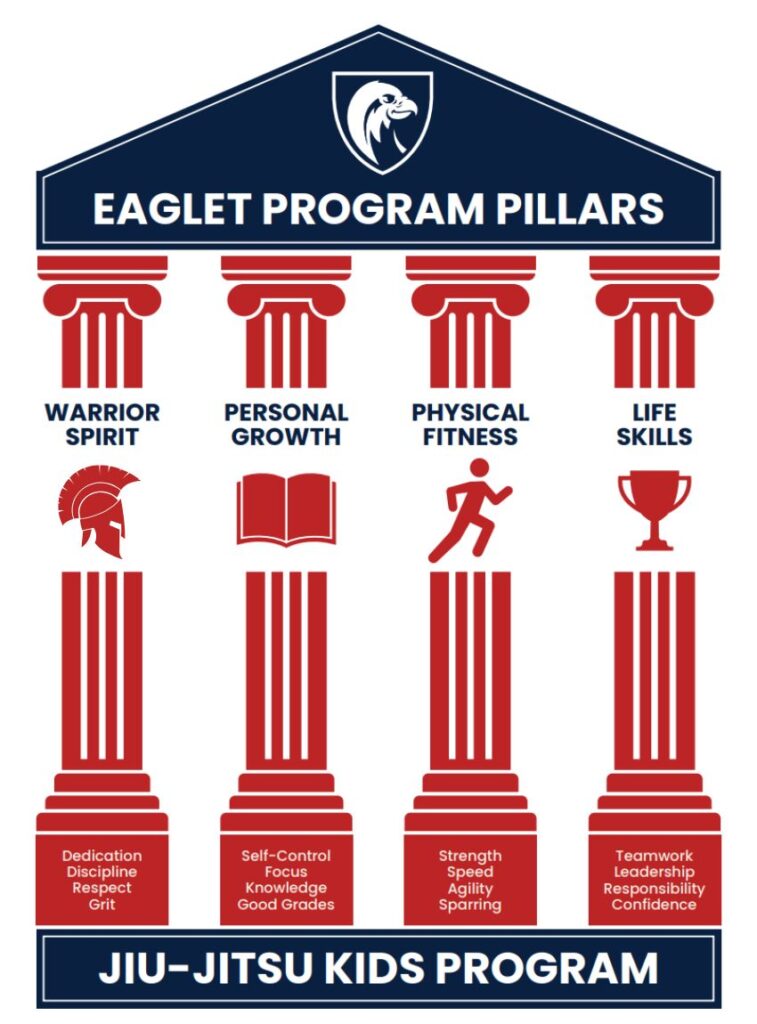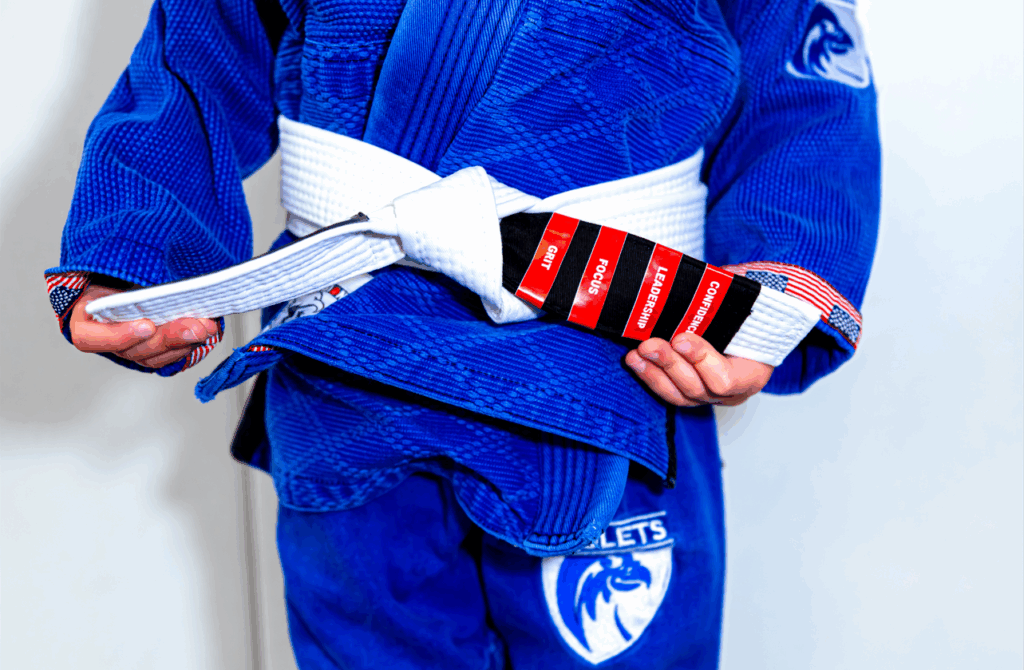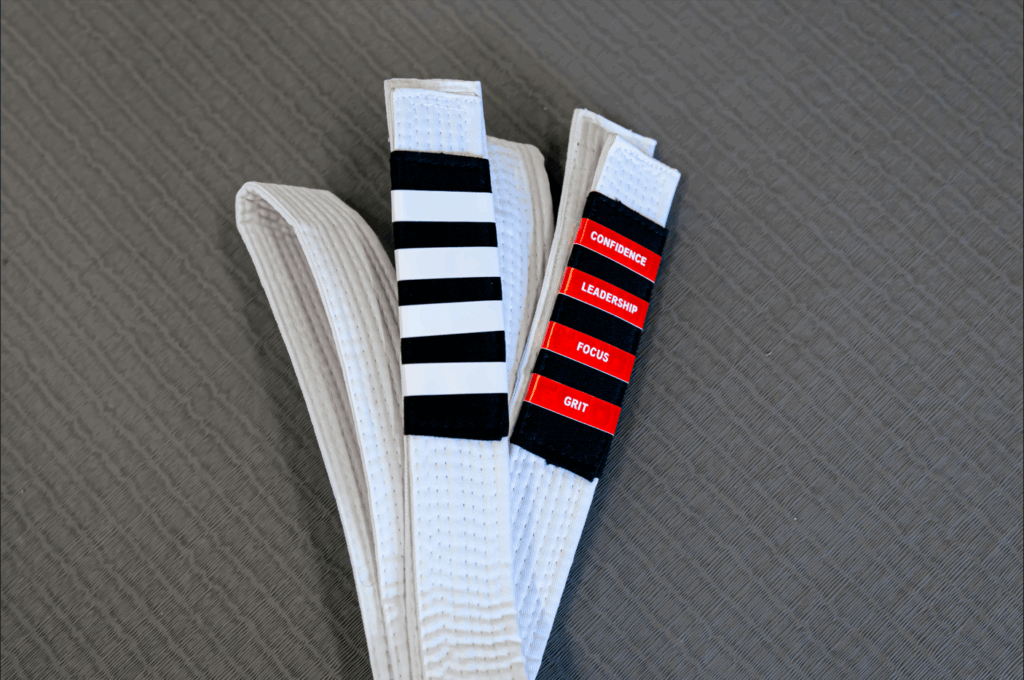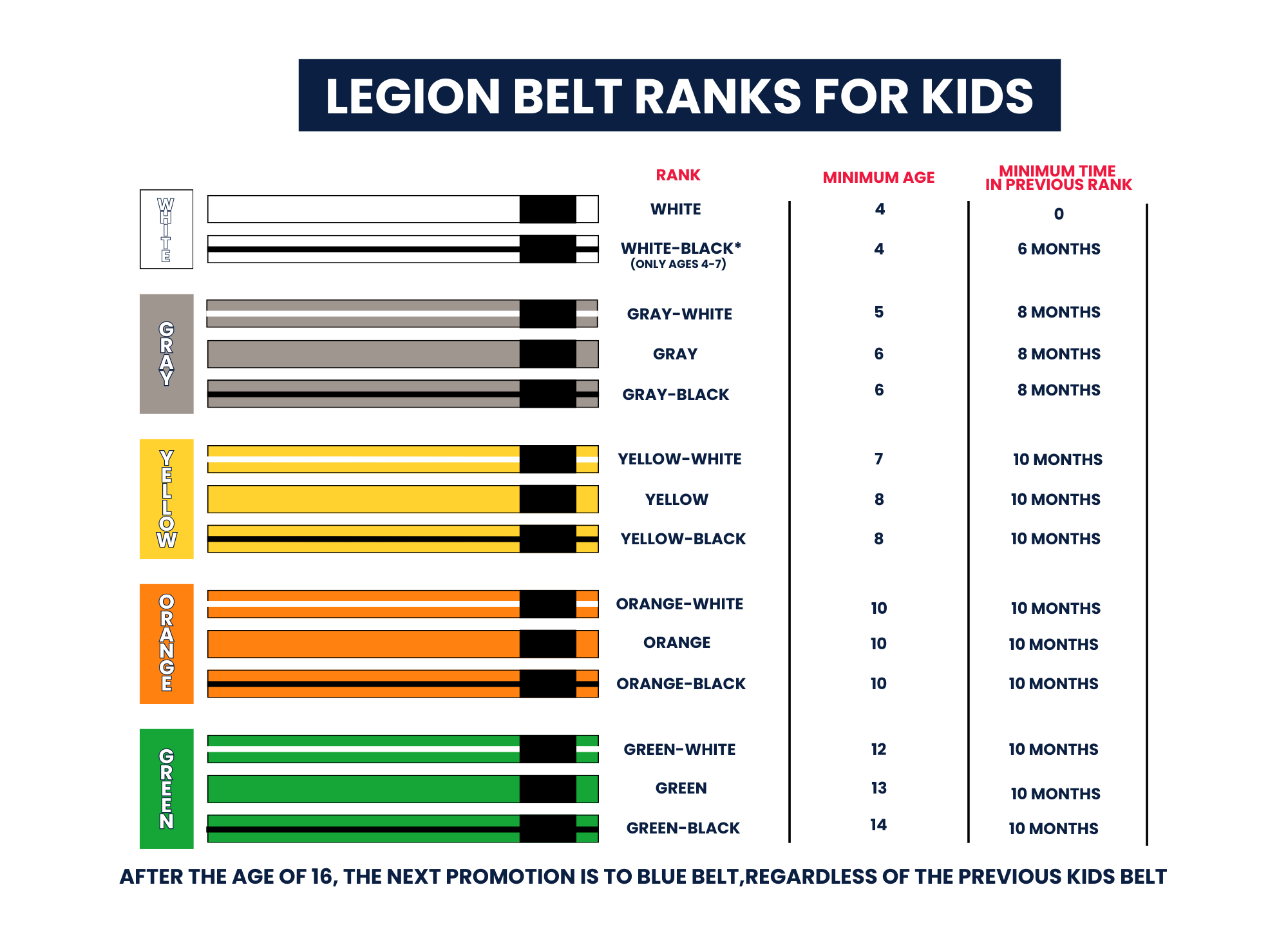Legion Kids Program Promotion Guide
At Legion American Jiu-Jitsu our goal is to incentivize and reward consistent progress among our students.
Frequent, but varied and deserved promotions are essential for motivating kids to rise through the ranks and ideally build a habit of coming to jiu-jitsu that continues into adulthood.
Legion’s proprietary kid program promotion system encourages personal development, as well as improvements in jiu-jitsu-specific skills. There are three kinds of promotions your child will experience:
- Eaglet Pillar Belt Stripes
- White Belt Stripes
- Belts
Counting just the white stripes and belts, there are 64 possible promotions. There are 13* belts and four stripes for each. Let’s take a closer look at the three promotion types, starting with…
Eaglet Pillar Stripes

The four Eaglet pillars are our way of ensuring that we are providing your kids with more than just takedowns and armbars.
Each month of training will focus on one pillar. Each week, one of the virtues will be emphasized as the topic of the week. Coaches will be looking to award the pillar stripes to the students who exemplify that week’s virtue in class.
At each belt, Eaglets are eligible to receive up to FIVE pillar stripes. These stripes are red and feature the name of the virtue. With sixteen exciting possibilities, you can look forward to seeing your little one learning about and being rewarded for a positive trait. This also gives you the option to teach them about it at home!

White Stripes

White stripes are more traditional in jiu-jitsu and are used for both kids and adults. Since most Eaglets can expect to spend about a year at each belt rank, the primary function of these stripes is to recognize the steady progress within that rank.
The white stripes can be awarded at the end of classes or at our quarterly promotion events. The first stripe at the white belt rank is typically expedited to help with building the healthy habit of coming to jiu-jitsu and is awarded after about a month.
Attendance is the primary factor when assessing for white stripes. However, ability and attitude are taken into account by the coaches.
Eaglets can get promoted slightly faster by having above-average attendance, showing exceptional ability and by being excellent teammates exemplifying the virtues we try to teach.
Eaglets may get promoted slower if they have very low attendance or are disruptive and disobedient in the classes. However, it should be noted that the coaches will never be looking to hold a child back because of attendance issues. In fact, stripes will be used to incentivize stronger attendance and to motivate kids to continue to come to class. By now we have seen dozens of transformations where kids resisted coming to jiu-jitsu at first and saw it as a chore to then doing two classes per day and having a blast.
Belts

Each belt color represents a new stage of learning and maturity. Kids move through belts by attending class consistently, demonstrating skill improvement, and showing good behavior and effort. Here’s a quick breakdown of what each color represents:
-
White Belt – The starting point for all students. This is where kids begin building coordination, focus, and comfort on the mat. At this stage, the goal is to help children develop a love for training and a strong foundation of basic movements, positions and submissions.
-
Gray Belts (Gray-White, Solid Gray, Gray-Black) – For ages 5 and up, gray belts mark early development. Students begin to understand and apply fundamental positions and techniques. Gray belts are about building consistency and helping young students gain confidence in live training.
-
Yellow Belts (Yellow-White, Solid Yellow, Yellow-Black) – Starting around age 7, yellow belts represent deeper technical understanding and improved control in movement. At this level, students are encouraged to take more initiative during drills and sparring, starting to make their own tactical decisions.
-
Orange Belts (Orange-White, Solid Orange, Orange-Black) – These belts are for more advanced students (typically age 10+) who are demonstrating maturity, solid sparring instincts, and strong fundamentals. Students at the orange level often begin mentoring younger classmates and refining their ability to apply techniques under pressure.
-
Green Belts (Green-White, Solid Green, Green-Black) – The final belts before transitioning to adult ranks. These students show leadership, advanced control, and a comprehensive grasp of jiu-jitsu. Green belts are expected to set the tone in class, showing focus, discipline, and a well-rounded game as they prepare for adult ranks. The first belt in the adult ranks is the blue belt.